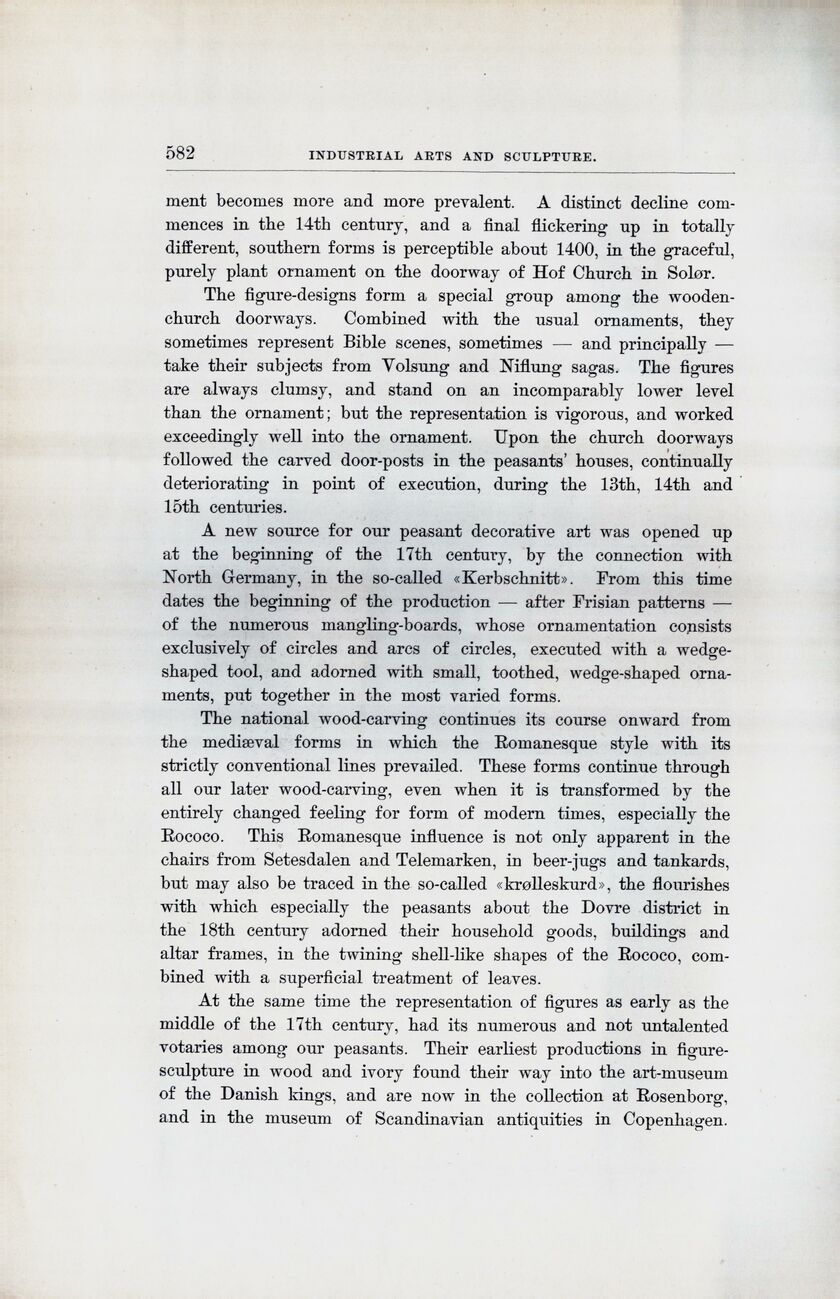
Full resolution (JPEG) - On this page / på denna sida - Industrial Arts and Sculpture, by L. Dietrichson

<< prev. page << föreg. sida << >> nästa sida >> next page >>
Below is the raw OCR text
from the above scanned image.
Do you see an error? Proofread the page now!
Här nedan syns maskintolkade texten från faksimilbilden ovan.
Ser du något fel? Korrekturläs sidan nu!
This page has been proofread at least once.
(diff)
(history)
Denna sida har korrekturlästs minst en gång.
(skillnad)
(historik)
ornament becomes more and more prevalent. A distinct decline
commences in the 14th century, and a final flickering up in totally
different, southern forms is perceptible about 1400, in the graceful,
purely plant ornament on the doorway of Hof Church in Solør.
The figure-designs form a special group among the
wooden-church doorways. Combined with the usual ornaments, they
sometimes represent Bible scenes, sometimes — and principally —
take their subjects from Volsung and Niflung sagas. The figures
are always clumsy, and stand on an incomparably lower level
than the ornament; but the representation is vigorous, and worked
exceedingly well into the ornament. Upon the church doorways
followed the carved door-posts in the peasants’ houses, continually
deteriorating in point of execution, during the 13th, 14th and
15th centuries.
A new source for our peasant decorative art was opened up
at the beginning of the 17th century, by the connection with
North Germany, in the so-called «Kerbschnitt». From this time
dates the beginning of the production — after Frisian patterns —
of the numerous mangling-boards, whose ornamentation consists
exclusively of circles and arcs of circles, executed with a
wedge-shaped tool, and adorned with small, toothed, wedge-shaped
ornaments, put together in the most varied forms.
The national wood-carving continues its course onward from
the mediæval forms in which the Romanesque style with its
strictly conventional lines prevailed. These forms continue through
all our later wood-carving, even when it is transformed by the
entirely changed feeling for form of modern times, especially the
Rococo. This Romanesque influence is not only apparent in the
chairs from Setesdalen and Telemarken, in beer-jugs and tankards,
but may also be traced in the so-called «krølleskurd», the flourishes
with which especially the peasants about the Dovre district in
the 18th century adorned their household goods, buildings and
altar frames, in the twining shell-like shapes of the Rococo,
combined with a superficial treatment of leaves.
At the same time the representation of figures as early as the
middle of the 17th century, had its numerous and not untalented
votaries among our peasants. Their earliest productions in
figure-sculpture in wood and ivory found their way into the art-museum
of the Danish kings, and are now in the collection at Rosenborg,
and in the museum of Scandinavian antiquities in Copenhagen.
<< prev. page << föreg. sida << >> nästa sida >> next page >>